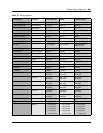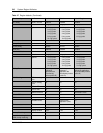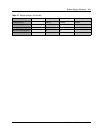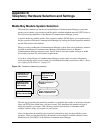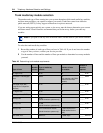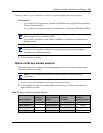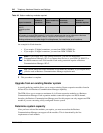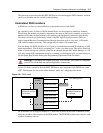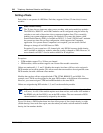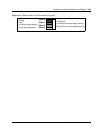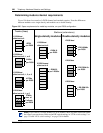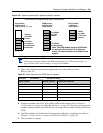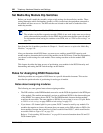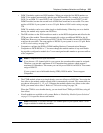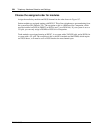
Telephony Hardware Selection and Settings 317
Installation and Maintenance Guide
The following sections describe the MSC DS30 buses, which manage the DS30 channels, and how
you fit your modules into the overall system planning.
Understand DS30 numbers
A DS30 bus is a block of virtual pathways on the media services card (MSC).
On a default system, six buses of DS30 channel blocks can be assigned to media bay modules.
Which block the module is assigned to determines the range of line (trunk) numbers or extension
numbers (DNs) that can be allocated by the module to the equipment connected to that module.
The other two blocks are permanently routed to the PEC digital signal processors (DSPs) to
support internal Business Communications Manager functions such as voice mail, VoIP trunks,
IVR, and IP telephony functions. This configuration is called a 2/6 channel split.
You can change the DS30 allocation to a 3/5 split to accommodate increased IP telephony or VoIP
trunk requirements. You do this by assigning bus 7 to the voice data sector. This choice should be
made at system startup, but a default system can be changed through the Unified Manager to a 3/5
split after startup if IP requirements increase. At startup, you indicate the split you want when you
run the Quick Start Wizard. Refer to the Programming Operations Guide for details.
Figure 193 shows a model of how the MSC DS30 buses are a subgroup of the DS256 bus on the
MSC. The diagram also shows the offset channels, which are a subgroup of the buses.
Figure 193 DS30 model
DS30 numbers are set using the number 4, 5, and 6 DIP switches on the back or underside of the
media bay modules. The exception is the FEM module. The FEM DIP switches turn on ports, each
of which consumes one bus.
Warning: If you change the channel split from 3/5 to 2/6 after your system is configured,
you will lose all the data and optional application connections.
DS256
on MSC
DS30 channel #2
DS30 channel #3
DS30 channel #4
DS30 channel #5
DS30 channel #6
DS30 channel #7
DS30 buses
available to modules
in a 2/6 split
Four offsets per bus
DS30 buses
available to modules
in a 3/5 split



